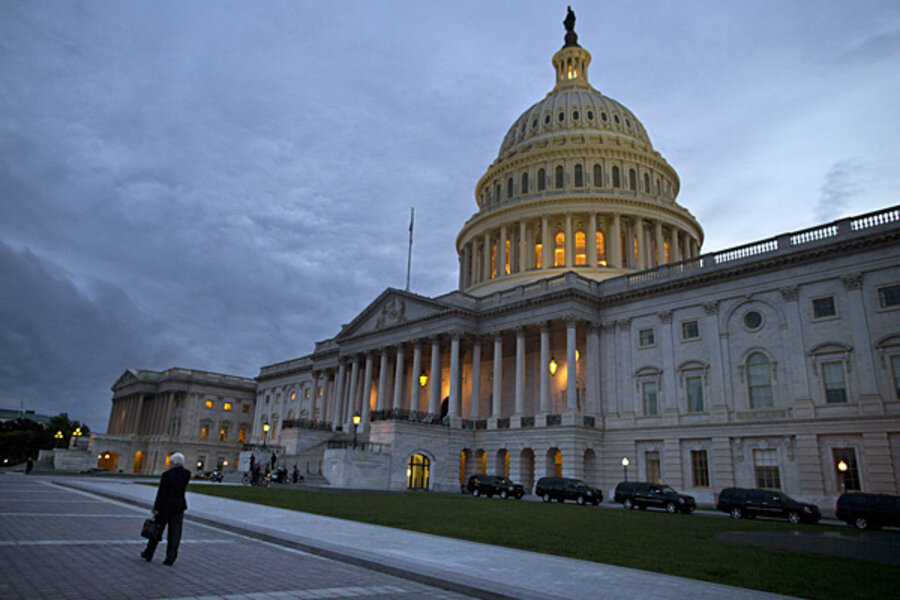In budget talks, new revenue remains a sticking point
Loading...
As House and Senate budget negotiators sit down (eight months late), the inevitable issue of new revenues has already raised its head. Predictably, Democrats insist that any fiscal deal include new taxes. Equally predictably, Republicans demand that it must not.
But behind the scenes, Washington’s wink-and-nod crowd thinks it has a solution: Raise new tax revenue—at least on paper—without actually increasing taxes. In fact, some of the gimmicks on the table create even darker Halloween magic. They purport to raise revenues by cutting taxes. Here are just a few examples:
Timing Changes: Timing gimmicks are possible because the Congressional Budget Office and the Joint Committee on Taxation—Congress’ official legislative scorekeepers—normally track revenues only within a 5- or 10-year budget window. As a result, Congress writes laws that boost revenues within those periods, regardless of the long-term consequences.
Chye-Ching Huang and Nathaniel Frentz at the Center on Budget and Policy Priorities have taken a nice look at this scam in a recent paper.
One favorite is the Roth rollover. Traditional “front-loaded” IRAs and 401(k)s allow pre-tax contributions but require participants to pay tax on withdrawals. By contrast, Roths require contributions with after-tax dollars—but withdrawals, including investment earnings, are tax-free.
This is itself terrible tax policy, but lawmakers have made it worse. By periodically making it easier to convert traditional IRAs and (k) plans to Roths (and taxing the transfer as if it is a withdrawal from an old-style plan) Congress can create billions of dollars in short-term revenues even as it adds billions more to the long-run deficit.
When Congress liberalized Roths in 2006, JCT figured the plan would raise $6.4 billion over 10 years. But my Tax Policy Center colleagues figured it would add $12 billion to the deficit in the following decade, and another $30 billion in the decade after that.
This, of course, is exactly the opposite of good fiscal policy. But it looks great inside the budget window.
The Phantom Tax Increase: This one lets Congress take credit for ending some controversial “loophole” without ever raising any real money.
Take proposals to raise taxes on carried interest—the compensation of private equity managers that is taxed at low capital gains rates. Plans floating around the Hill would tax this compensation as ordinary income.
But when a final bill is drafted, it is likely to be riddled with highly-technical exceptions. As a result, with a few adjustments to its comp structure, the private equity crowd is likely to continue to enjoy the low capital gains rate. It will be years before congressional tax experts catch up with carried interest 2.0.
The real-world consequences of a carried interest bill could be even worse. Here’s why: While my TPC colleague Steve Rosenthal and others believe that private equity is already subject to ordinary income tax, the IRS is making no effort to collect the additional revenue.
But any carried interest bill is likely to enshrine into law the lower rate for private equity firms and their investors and bar the IRS from trying to collect those extra dollars. This could cost Treasury big bucks in the long run but because the tax isn’t being collected now, the change would never be counted as lost revenue.
The Tax Holiday: This variation of the timing gimmick allows taxpayers who have avoided tax liability to wipe the slate clean by paying now at a temporarily reduced rate.
States regularly enact such tax holidays. And Congress has done the same with the deferred tax liability of multinational corporations that have chosen to keep foreign earnings overseas rather than returning them to the US and paying the 35 percent corporate tax.
If Congress allows those firms to temporarily repatriate the funds at, say, a 5 percent rate, is it cutting their taxes (since they’d be paying at 5 percent instead of 35 percent) or is it raising them (since they were paying no tax on income they stashed overseas)?
Based on its experience with a similar 2004 holiday, JCT has taken the position that it is a tax cut, at least for now. JCT concluded that some firms would indeed return money to the U.S. that they would otherwise have left overseas, thus raising revenues. However, it also projected that others would repatriate earnings they would have returned anyway, and some would shift future investment and profits overseas while they patiently await the next tax holiday.
As a result, in 2011 JCT concluded that even within the 10 year budget window a repatriation holiday would lose revenue. It would raise taxes on multinationals for the first three years but add a net $78 billion to the deficit over a decade. Multinationals, not surprisingly, reject this projection and insist greater domestic economic activity would boost revenues.
And there is another complication. What if this holiday were part of a transition to a new international tax model, as many in the business community want? In that case, those medium-term budget consequences could easily be washed out by bigger changes.
These are just a few examples of how lawmakers can try to game the system. And other ideas the rest of us haven’t even thought of yet will inevitably surface over the next few months. When they do, it might be worthwhile to consider the long-term revenue cost, not just how they’ll look within the narrow budget window.





